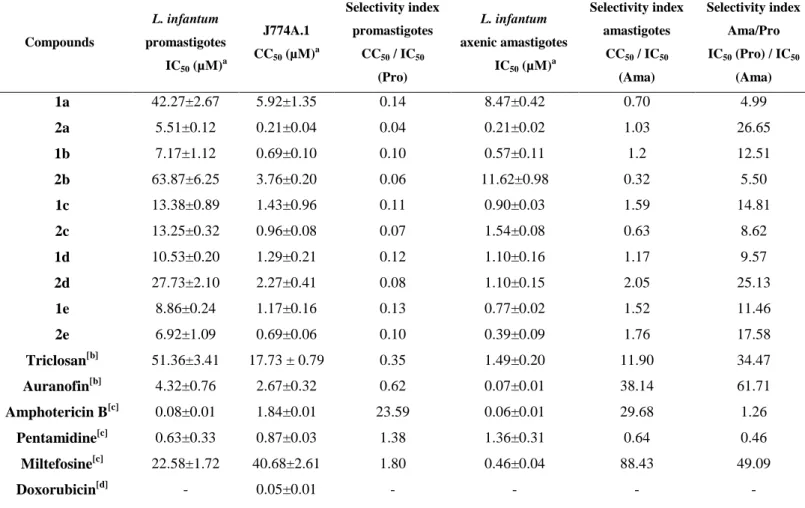Design, Synthesis and Efficacy of Hybrid Triclosan‐gold Based Molecules on Artemisinin‐resistant Plasmodium falciparum and Leishmania infantum Parasites
Texte intégral
Figure



![Table 3. Recrudescence capacity of Plasmodium falciparum F32-ART and F32-TEM strains after 48h-drug exposure [a]](https://thumb-eu.123doks.com/thumbv2/123doknet/13669496.430429/11.892.40.839.429.732/table-recrudescence-capacity-plasmodium-falciparum-art-strains-exposure.webp)
Documents relatifs
Clean future (red curve, circles), for different values of the social cost of carbon (in 2018 US dollars). Optimum: the extraction path is optimized over the 1992-2050 period,
The artemisinin resistance genetic background was defined as the intersection between ART-R 97 subpopulation background genes and the 467 KHA significant genes (Fig. 3 b;
To improve the selectivity of tumor cell killing by anti-cancer drugs, such as cytotoxic agents and bio-reducible pro-drugs that can be selectively delivered or activated in the
GO enrichment analysis showed that 37 transcripts belonging to the protein phos- phorylation category are 2.04 to 8.93-fold upregulated in the LiSbR line (Table 2 and
b Geospatial map generated by a kriging model of the estimated distribution of artemisinin resistance, based on the sample data in a.. c The locations where artemisinin resistance
Methods In this observational study, we tested Plasmodium falciparum isolates from Myanmar, northeastern Thailand, southern Laos, and western Cambodia for PfKelch13 mutations and
This molecular design led to compounds with high in vitro activity, markedly supe- rior to chloroquine and comparable to amodiaquine, against CQ-sensitive and particularly
Since the compounds are active on the early ring stage (0 − 6 hpi parasites), we tested their ability to kill the artemisinin-resistant strains 5248 and 6320 in the ring-stage